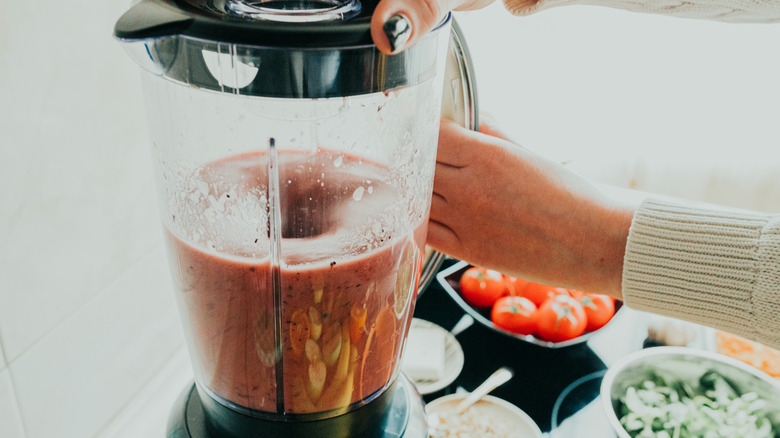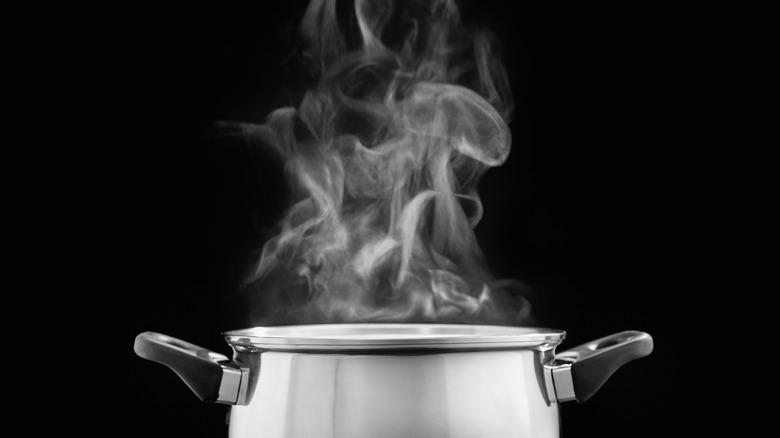How To Avoid Scalding Steam When Pureeing Vegetables
Pureeing is perhaps one of the most underrated cooking techniques, especially when the discussion turns to vegetables. Pureed veggies are useful for amping up the flavor, texture, and nutrition of hearty soups, sauces, baked goods, side dishes, and more. But tossing hot, cooked food into your blender is a big mistake when prepping vegetables, as you run the risk of causing a steam explosion.
Fortunately, the solution is simple: just a bit of time and patience. Rather than tossing your veggies directly from the pan, oven, or grill into your blender, allow them to slightly cool first, releasing their steam into the air so it can safely dissipate. Then, when it's time to puree, work in multiple, small batches rather than one large one. In addition, avoid tightly securing the blender lid, as this could cause a dangerous pressure to build up. The lid should be slightly cracked, or the vent should be left open to allow steam to escape. You can also place a towel over the gap to prevent burns.
The dangerous downsides of not venting
While this step may seem small, it's vital for your safety and the cleanliness of your kitchen. Pureeing hot, freshly cooked vegetables in an airtight blender releases a significant amount of steam at once, which can blow the lid right off. This can splatter you or others nearby with hot vegetable mush, potentially resulting in serious burns. What's more, expanding steam can create scalding, third-degree burns just on its own: According to the American Burn Association, over ⅓ of scalding injuries admitted to U.S. burn units are a result of contact with steam or hot liquid.
Additionally, while a scalded chef likely won't be too concerned about cleanup, steam explosions will also create a huge mess and waste a great deal of the puree you worked so hard on. In any case, adding this simple cooling step to your repertoire should be a safety priority the next time you're preparing any of the numerous dishes that benefit from vegetable purees.

